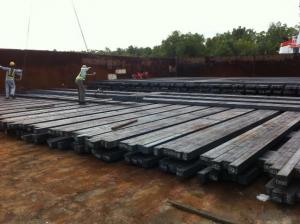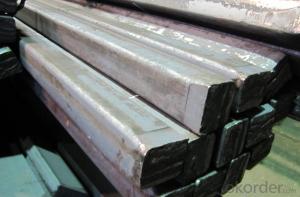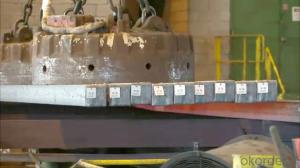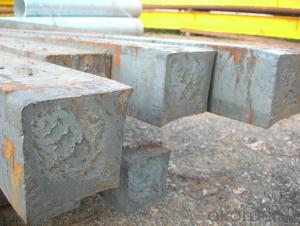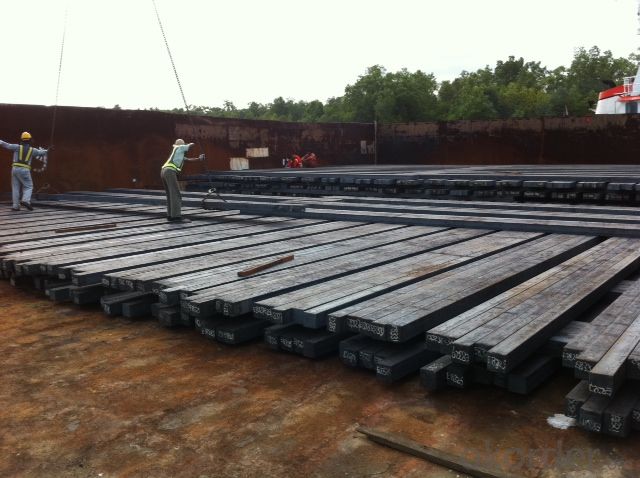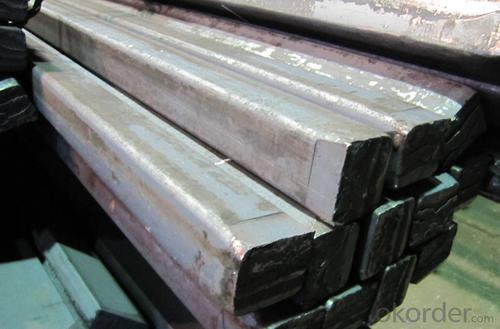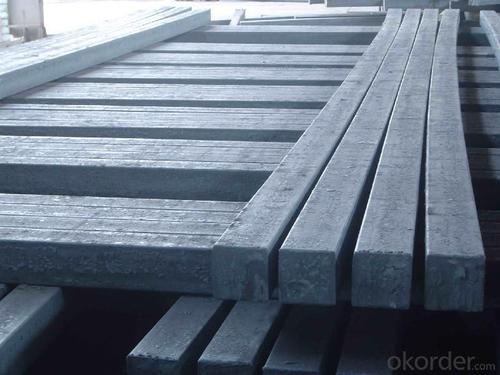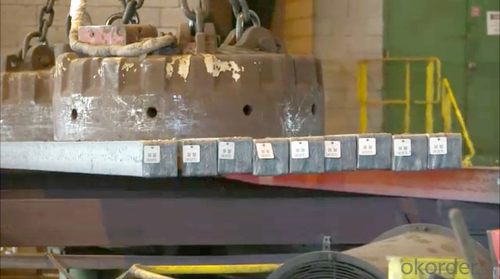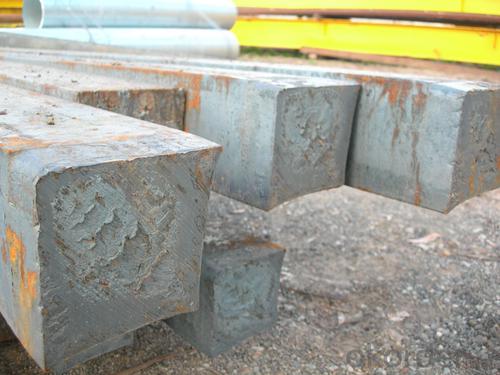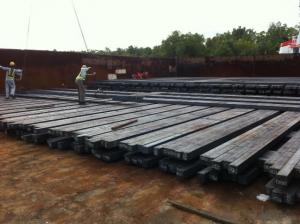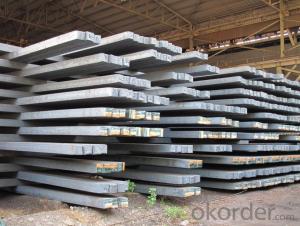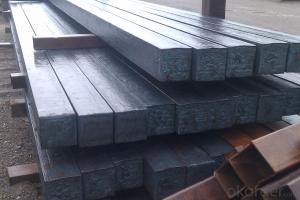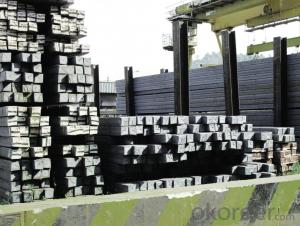Prime square alloy steel billet 150mm Q235
- Loading Port:
- Shanghai
- Payment Terms:
- TT OR LC
- Min Order Qty:
- 100 m.t.
- Supply Capability:
- 10000 m.t./month
OKorder Service Pledge
OKorder Financial Service
You Might Also Like
Structure of Prime square alloy steel billet 150mm Q235
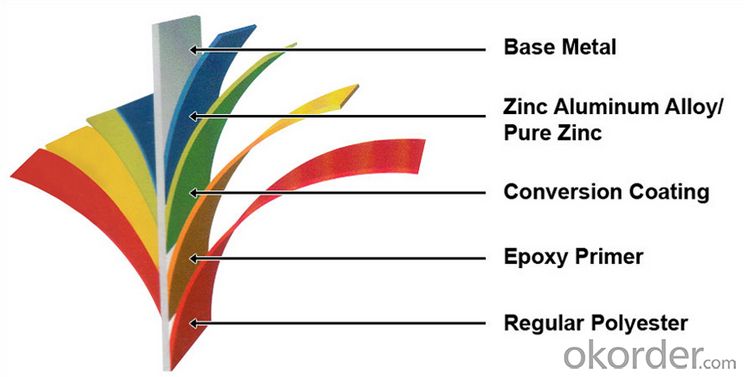
Description of Prime square alloy steel billet 150mm Q235
1) Excellent corrosion resistance: The zinc layer provides a good protection of Pre-painted Galvanizeed Steel Sheet.
2) High heat resistance: The reflective surface of the material aids in efficiently reflecting the sunlight away and in turn reducing the amount of heat transmitted. The thermal reflectivity converts into energy savings.
3) Aesthetics: Pre-Painted Galvanized steel sheet is available in plethora of patterns and multiple sizes as per the requirements that given by our customers.
4) Versatility: can be used in the various areas.

Main Feature of Prime square alloy steel billet 150mm Q235
Uncoated CR steel sheet
With the features of in line with the international highest standards in demension and shape, excellent surface finish and properties, the products are mainly used in home appliance and automobile industries.
Galvanized steel sheet(include HDG and EG)
With the features of good corrosion resistance, the products are mainly used in automobile, home appliance, electronics, building and machinery manufacture industries, etc.
Precoated steel sheet
With the features of enviromental protection and good processablility, long lasting surface durability, rich in colors, the products are maily used in building, home appliance and furniture industries, etc.
Applications of Prime square alloy steel billet 150mm Q235
1) Excellent corrosion resistance: The zinc layer provides a good protection of Pre-painted Galvanizeed Steel Sheet.
2) High heat resistance: The reflective surface of the material aids in efficiently reflecting the sunlight away and in turn reducing the amount of heat transmitted. The thermal reflectivity converts into energy savings.
3) Aesthetics: Pre-Painted Galvanized steel sheet is available in plethora of patterns and multiple sizes as per the requirements that given by our customers.
4) Versatility: can be used in the various areas.

Specifications of Prime square alloy steel billet 150mm Q235
Product | Billet |
Material Grade | SGCC / SGCH / DX51D+AZ, etc |
Thickness | 0.6-3.0mm |
Width | 500-1500mm |
Tolerance | Thickness: +/-0.02mm , Width:+/-2mm |
Zinc-coating | Z30-150g/m2 |
Technique | Raw material: Hot rolled steel coil --> Cold rolled_>hot dipped galvalume |
Surface | Dried, Chromated, Unoiled |
Spangle | Regular spangle , small spangle, zero spangle |
ID | 508MM 610MM |
Coil weight | 1-25MT |
Export package | Cardboard inner sleeves, Waterproof paper, galvanized steel covered and steel strip packed |
FAQ of Prime square alloy steel billet 150mm Q235
We have organized several common questions for our clients,may help you sincerely:
1. How Can I Visit There?
Our company is located in Tianjin City, China, near Beijing. You can fly to Tianjin Airport Directly. All our clients, from home or aboard, are warmly welcome to visit us!
2. How Can I Get Some Sample?
We are honored to offer you sample.
3. Why choose CNBM?
we always fix steel produce in container well to make it safe arrive at destination port
we always provide best and professional forward service for our buyer
we always apply 14days free detention for our buyers container in destination
we provide one set After-sales service for our buyer
we provide China inland steel market price report
we help our buyer become number one in local market .
- Q: What are the main factors affecting the formability of alloy steel billets?
- The formability of alloy steel billets, which refers to the ability of the material to be shaped or formed without cracking or fracturing, is influenced by several key factors. 1. Alloy composition: The alloy composition of steel billets plays a significant role in determining their formability. Different alloying elements such as carbon, manganese, chromium, and nickel can alter the mechanical properties of the steel, including its ductility and toughness. Higher levels of certain elements can improve formability, while excessive amounts can lead to brittleness and reduced formability. 2. Grain size and structure: The grain size and structure of the steel billets also affect formability. Fine-grained structures have better formability compared to coarser grain sizes. This is because fine grains allow for more uniform deformation and reduce the likelihood of localized strain concentration, which can lead to cracking. 3. Temperature: The temperature at which the steel billets are processed greatly influences their formability. The material's ductility and ability to deform without cracking are generally enhanced at higher temperatures. This is due to the reduction in the material's yield strength and increased plasticity. However, excessively high temperatures can also lead to excessive grain growth and decreased formability. 4. Strain rate: The rate at which the steel billets are deformed is another important factor. Higher strain rates can result in reduced formability, as the material may not have sufficient time to accommodate the deformation before fracture occurs. Controlling the strain rate during forming processes is crucial to ensure optimal formability. 5. Lubrication: The use of lubricants during the forming process can significantly improve the formability of steel billets. Lubricants reduce friction between the material and the forming tools, minimizing the risk of sticking or tearing. They also help dissipate heat generated during deformation, preventing excessive temperature rise that can negatively impact formability. 6. Forming process: The specific method used to shape the steel billets can also affect formability. Different processes, such as forging, rolling, or extrusion, impose varying levels of strain and stress on the material. Each process has its own limitations and requirements for optimal formability, and selecting the appropriate forming method is crucial to achieve the desired shape without compromising the material's integrity. In summary, the formability of alloy steel billets is influenced by their alloy composition, grain size and structure, temperature, strain rate, lubrication, and the chosen forming process. Understanding and controlling these factors are essential for achieving the desired shape and avoiding defects or failures during the forming of alloy steel billets.
- Q: Can steel billets be used in the automotive industry?
- Yes, steel billets can be used in the automotive industry. Steel billets are semi-finished steel products that are typically used for further processing into different shapes and forms. In the automotive industry, steel billets are commonly used for the production of various automotive components such as engine parts, transmission parts, chassis components, and suspension systems. The use of steel billets in the automotive industry offers several advantages including high strength, durability, and cost-effectiveness. Additionally, steel billets can be easily formed, machined, and welded to meet specific design requirements and performance standards in the automotive sector. Therefore, steel billets play a crucial role in the manufacturing of automobiles and contribute to the overall performance, safety, and reliability of vehicles.
- Q: How are steel billets used in the manufacturing of kitchen appliances?
- Steel billets are used in the manufacturing of kitchen appliances as the primary raw material. These billets are heated and then shaped or molded into various components such as bodies, frames, handles, or cooktops, which form the structural foundation of kitchen appliances. The high strength and durability of steel make it an ideal choice for withstanding the rigors of everyday use in kitchen appliances, ensuring their longevity and quality.
- Q: How are steel billets used in the manufacturing of shafts?
- Steel billets are an integral component in the manufacturing of shafts. Billets are essentially semi-finished steel products that are typically square or rectangular in shape. They are produced through a process called casting, where molten steel is poured into molds and allowed to solidify. In the context of shaft manufacturing, steel billets serve as the starting material. They are heated to a specific temperature to make them more malleable and easier to work with. Once heated, the billets are then subjected to a series of processes such as forging, rolling, or extrusion. Forging involves shaping the heated billet by applying compressive forces using a hammer or a press. This process helps refine the grain structure of the steel, improving its strength and reducing any internal defects. Rolling, on the other hand, involves passing the billet through a series of rollers to gradually shape it into the desired form. It is commonly used for producing long, cylindrical shafts. Extrusion is another technique used in the manufacturing of shafts. In this process, the heated billet is forced through a die using high pressure, resulting in a shaft with a specific cross-sectional shape. This method is particularly useful for producing shafts with complex geometries or intricate details. After the initial shaping process, the shafts are further machined, heat-treated, and finished to achieve the desired dimensions, surface finish, and mechanical properties. Machining involves removing excess material and creating specific features such as keyways or threads. Heat treatment is used to enhance the shaft's strength, hardness, and durability. In summary, steel billets are the raw material in the manufacturing process of shafts. Through various shaping techniques such as forging, rolling, or extrusion, the billets are transformed into the desired shape, size, and properties of the shafts. This ensures that the resulting shafts are strong, reliable, and suitable for their intended applications in industries such as automotive, aerospace, and machinery.
- Q: What are the different types of steel billet rolling mill defects?
- Some common types of steel billet rolling mill defects include surface cracks, internal cracks, surface defects such as pits or scratches, shape defects such as bowing or twisting, and dimensional defects such as thickness variations or width deviations.
- Q: Billet heating furnace prices?
- The reheating furnace control mode according to the different tonnage, heating medium, price range, or recommendations according to your requirements, find good few industry units do offer the program, compared to eradicate the solution and quotation.
- Q: How are steel billets used in the manufacturing of hydraulic equipment?
- Steel billets are commonly used in the manufacturing of hydraulic equipment as they serve as the raw material for creating various components, such as cylinders, valves, and pistons. These billets are heated and then shaped through forging or extrusion processes to form the desired hydraulic equipment parts. The strength, durability, and versatility of steel make it a preferred material choice for hydraulic equipment, enabling it to withstand the high pressures and demanding working conditions in this industry.
- Q: What are the different types of steel billet forming processes?
- The different types of steel billet forming processes include hot rolling, cold rolling, extrusion, forging, and casting.
- Q: What are the main challenges in the storage of steel billets?
- The main challenges in the storage of steel billets include the need for proper space allocation, adequate handling equipment, protection against corrosion and rust, and maintaining optimal temperature and humidity levels. Additionally, ensuring proper inventory management and efficient transportation of the billets can also be challenging.
- Q: What does "billet" mean?
- Steelmaking and continuous casting of steel products are mainly used for steel rolling, such as round bar, wire rod, sheet metal and so on
Send your message to us
Prime square alloy steel billet 150mm Q235
- Loading Port:
- Shanghai
- Payment Terms:
- TT OR LC
- Min Order Qty:
- 100 m.t.
- Supply Capability:
- 10000 m.t./month
OKorder Service Pledge
OKorder Financial Service
Similar products
Hot products
Hot Searches
Related keywords
